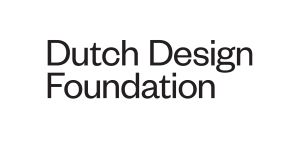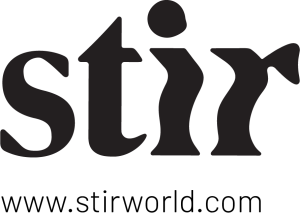The context
Every day, the NS serves over 600,000 customers at around 400 stations throughout the Netherlands. The stations are extremely diverse. The larger stations like Amsterdam, Rotterdam and Utrecht offer a wide variety of amenities. These range from basic facilities such as toilets, waiting areas and parking facilities for cars and bikes, to a large selection of shops, cafes and restaurants. Many stations provide a far less extensive range of amenities, sometimes only a sheltered waiting area on the platform. Customers can always count on a clean, well maintained and safe station with excellent routing and travel information. The station offers passengers convenience and hospitality designed around the primary function of the journey, given that the station is rarely the final destination.
The station of tomorrow
Passengers spend an average of 7 minutes in the station: from the time they arrive until they step “into the train”. The primary function of a station is to receive passengers wishing to travel by different modes of transport. Passengers often rush through the station with a clear purpose, which is why many amenities focus on speed, and layout is important. Ideally, commuters make their way through the station intuitively. In general, most of the improvements NS has made to its stations so far, centre around functionality. However, between now and the next few years, passengers will consider these developments “standard”. Currently, 72% of passengers give the station a score of 7 or higher. NS is eager to raise the bar a little higher in order to maintain passengers’ positive perceptions. This requires new ideas.
A station’s secondary function is to accommodate short stays. When passengers wait for their train, they need to be able to spend the time usefully or pleasantly. For example, while waiting, passengers could shop, or buy a snack. During a short stay, passengers are less rushed and more relaxed, and open to (adventurous, inspiring) stimuli from the environment.
New ideas are inspired by gaining a better understanding of the different types of customers and their corresponding needs. In which sense NS is convinced that the emotional connection makes all the difference. For example, an initiative like the Station Piano may have no functional value for the journey from A to B but helps to create a positive travel experience.
The station (station building) connects people and their environment
In addition to offering convenience and hospitality, we believe the station connects, and has the capacity to surprise. A station provides a form of connection that goes beyond its fundamental role as transportation link. In a number of stations, this connection is created by an “over-representation” of a specific customer group: a station frequented by schoolchildren, or a station like Hilversum, where many media people work. There are also stations that, for many people, are the starting point of their ‘day out’, or the beginning of their visit to an event. What’s more, the building of each station is unique, and that building stands in a unique environment. We see a triangular relationship between the unique customer (with his travel objective and needs) who spends time in a unique building in a unique environment. How could this triangle be activated to create a unique experience? Where the station is so full of surprises that you leave the station smiling. A station that, before long, starts to feel like ‘my station’.
The challenge
NS challenges designers to come up with one or more social interventions in the category of spending (social) time at the station. NS is looking for ideas/designs that encourage passengers to feel a connection with the station and/or its users – a sense of connection so strong that you feel at home in any station. Perhaps the station itself becomes your destination? And, just as you receive surprises at home, now and then you might find surprises at the station, too. The time you spend at the station should make your travel experience more fun, pleasant or useful and perhaps even persuade you to take a later train!
You can find the conditions for participating here (in Dutch).
Registration and procedure
You can register up to Friday 11 May via this link. Three designers will be selected from the registrations who will participate in the ‘What if Lab: Nederlandse Spoorwegen’. They will be informed of this by Friday 18 May. The three selected designers will be given six weeks to develop a concept in cooperation with NS. They will present this concept to a jury of 10 by mid-July. The jury will select two designs that will be worked out in detail in the run-up to Dutch Design Week (DDW).
Registration
Registration for the ‘What if Lab: NS’ is possible for professional designers, design studios and student (teams).
When registering, we request that designers provide a reference of 2 to 5 relevant previously executed projects and a motivation in which you indicate why you would like to participate in the ‘What if Lab: NS’ and what your unique added value is as a designer for this project. You do not yet have to present a fleshed-out design solution. Selection will be based on references to previous projects and motivation.
Please note: it is not possible to save entered details on the registration form and to return to it later and finish completing it. Therefore we advise you to prepare all the information / text in a word processing program like Microsoft Word before you set to work in completing the registration form.
Description of relevant projects: max 150 words per project.
Motivation for participation: max 600 words
Images: JPG. The images must have a minimum number of 600 pixels across their width, 72 dpi. The images must be no larger than 2MB in size.
Dutch Design Week station: the winning idea in practice
The winners present their design at Eindhoven station and/or Eindhoven Strijp-S station during Dutch Design Week, and will be present at the station to explain their design to visitors. We will create a Dutch Design Week station for each design where passengers can see, experience, and try out the design. In brief: your own platform on a station! Passengers will score the design at this Dutch Design Week station; the ratings will be shared with the designers.
Reimbursement
NS offers the three selected designers a reimbursement of € 2,500 for the concept development. For the two designers who are invited to work on an intervention that will actually take place in the train NS is offering an additional reimbursement of € 2,500. This reimbursement is a fee for the hours worked (excluding the cost of materials).
Criteria
A station must comply with strict requirements and laws. To ensure the design is as practical and feasible as possible, please take the following rules into account:
- Create a design that can be easily applied and removed like an ‘experiential blanket’.
- You may not alter any of the ‘hardware’ of a station such as reposition furniture, anchor points, cabinets, walls, etc. Your design must accommodate the current station structure. NS is not looking for a design for a new kind of chair, for instance.
- It is important to focus on all the senses so that, by doing so, the design can cater to able-bodied and less able-bodied passengers.
- Think about the various factors that make the design practical and feasible: client, comfort, cleaning, maintenance, safety, costs, etc.
- Flexibility to be able to change throughout the day/season/year is key in responding faster/more easily to client wishes (needs) and (at least keep up with) innovations.
- Many stations have Wi-Fi but bear in mind that the bandwidth is limited.
- Testing can take place at the station, but only after consulting with NS.
Intellectual Property Rights
NS will acquire the intellectual property rights for the two winning designs. The ‘What if Lab: NS’ winners will transfer completely and without restriction and free of charge the (intellectual) property with regard to the design.
NS will, if it decides to develop one of the concepts any further, in the first place enter an exclusive dialogue with the designer to investigate if he/she can develop this concept any further.
If NS is demonstrably not using or has not used a concept within three years, NS will transfer to the designer the (intellectual) property rights relating to the design at the request of the designer concerned unless NS still has concrete plans to use the concept at that point in time.
Timeline
Deadline for registrations: 11 May 2018
Selection announced: 18 May 2018
Masterclass for 3 selected designers: 24 May 2018
Presentation and judging: 13 July 2018
Dutch Design Week: 20-28 October 2018
Questions
If you have any other questions, please get in touch with programme manager Dries van Wagenberg.
Inspiration
Every day, NS provides sustainable door to door transport by train, bus, tram, public transport bicycle or alternatives such as the Zonetaxi and Greenwheels for 2.5 million passengers throughout Europe. With a total workforce of 33,571 (together with subsidiary Abellio), NS operates in the Netherlands, England and Germany. The Thalys, ICE and the NS International InterCitys offer attractive, sustainable alternatives to flights and long-distance car journeys.
In the Netherlands, NS trains transport some 1.2 million passengers a day to their destination, without the inconvenience and delays of traffic jams and parking problems. NS trains are also climate friendly. NS Stations is the station company of the Netherlands. In collaboration with its partners, NS offers pleasant, lively station environments with good parking, working, living and short-stay amenities. NS also takes care of the trains: from cleaning and technical maintenance to complete modernisation.
Useful documents
To give you the background details you need, NS has compiled several documents describing passenger experiences, and how passengers spend their time on train journeys.
Need solid background information to write your motivation? These PDFs can help.
Which concepts have already been developed in the What if Lab: NS?
The following concepts were developed during previous editions of the What if Lab: NS. The NS has commissioned the development of the following projects:
Spoorwijs – cheating allowed!
Waarmakers designed a quiz that passengers can play against each other in the train, including questions about the surroundings, and drawing assignments. Through their smartphone, passengers are subtly challenged to interact with other commuters, and to discover more about the route they are travelling.
MindfulNS
Studio Jan Pieter Kaptein designed an app to teach simple mindfulness techniques from coach Viktoria Susovits during a short training. This helps passengers get their day off to a relaxed start, with a fluid transition from private life to work. Through the app, passengers can discover one-off mindfulness exercises, or take part in a free 6 to 8-week mindfulness course.
Reisje fit
Enrichers designed an add-on furniture collection of moving furniture to get passengers moving. Every piece of furniture has its own function: upholstered Macaron cushions for core stability, the Floatile water tile gets passengers balancing while standing up, and the Bambata water cushion springs up when someone takes a seat next to you.
Manon van Hoeckel and Tom Loois developed Listening Pane, an audio tour in the train. While travelling through the landscape, the passengers can listen to the youngest train driver, the oldest ticket inspector, and hear the stories behind the strangest objects in the lost and found. ‘Listening Pane’ transforms the journey into an experience.










